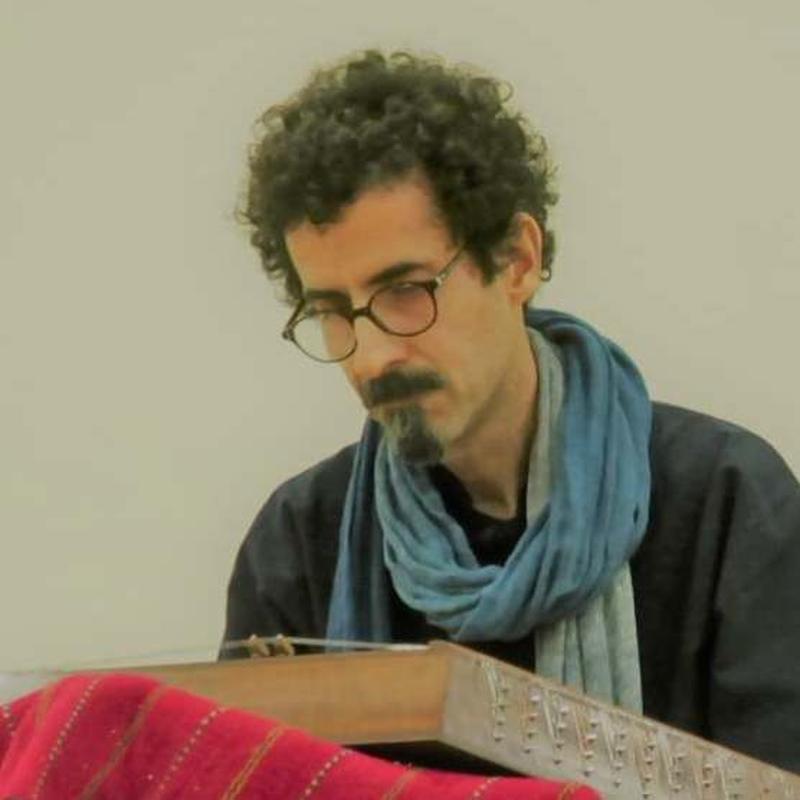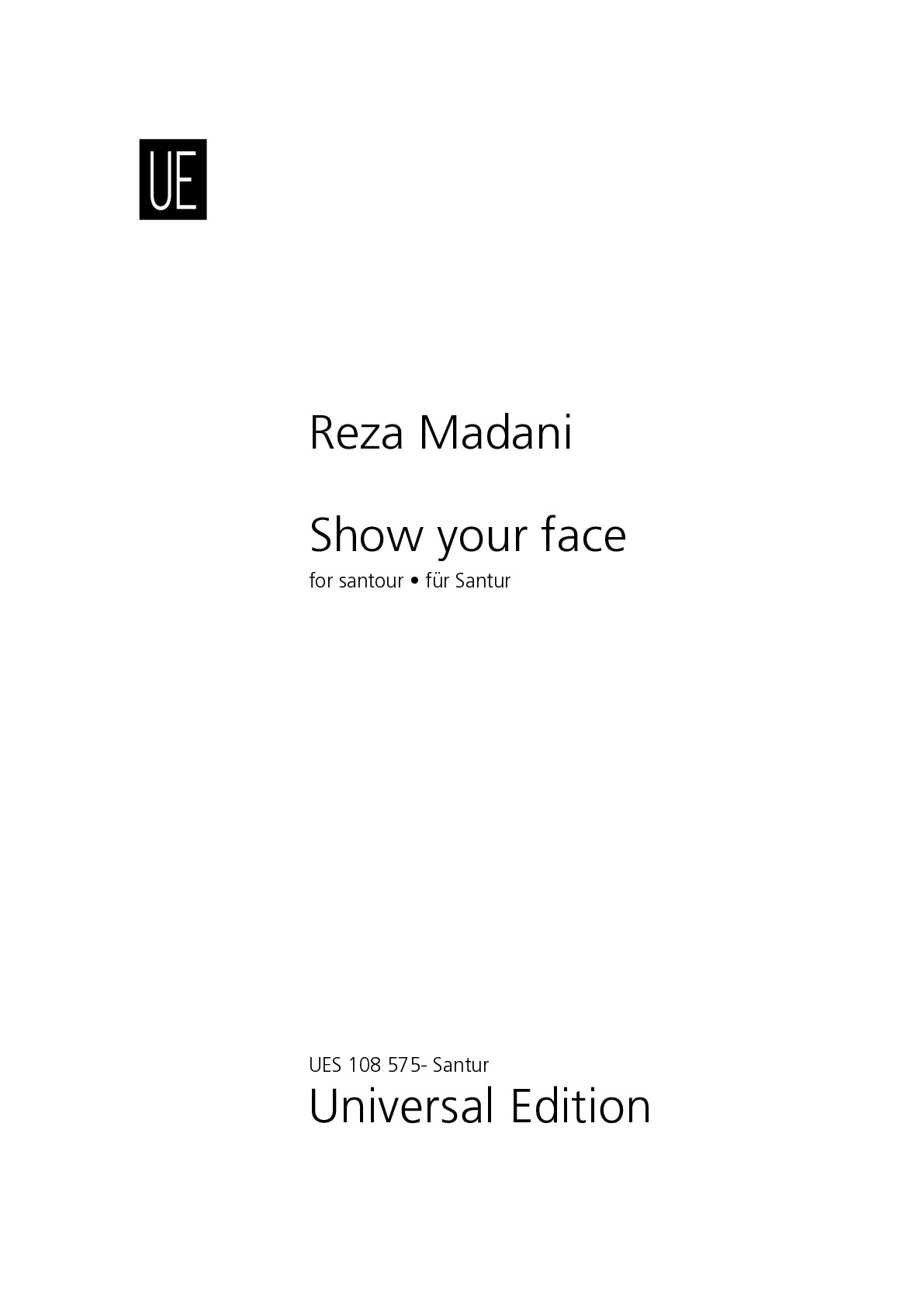

Reza Madani
Show your face
Duration: 4'
Solos:
santur
Show your face
Sample pages
Audio preview
Video
Work introduction
To compose this work, I was inspired by a poem of the same name (Benmy Rokh in Persian) by the 13th-century Persian poet Mowlana, also known as Rumi. The composition is of an improvisatory nature; therefore, the time signatures and, to a lesser degree, the note values are somewhat indicative. Accordingly, the performer may take liberties with time values, guided by their own sensibility, to add flexibility in constructing the phrasings.
What is necessary to perform this work?
Mode and tonality
This piece is written in the Iranian mode Mahour in the tonality of G. As this mode does not include demiflats, the piece can be played as written on any Western instrument that encompasses its tonal range.The tremolos are specific to the santour and do not need to be executed on a bowed or wind instrument.
Hammer signs
In Persian, the hammers used to play the santour are called mezrabs. In the music score, hammer signs are indicated by a V for the left-hand mezrab and an n-like shape for the right-hand mezrab.
Tremolos and trills
In santour music, tremolos, called reez in Persian (literally meaning "small"), are very common. They are used both as ornamentation for short notes (indicated by double diagonals on the note's stem) and as a means to sustain long notes (indicated by triple diagonals on the note's stem). Tremolos are executed by rapidly alternating between the left and right mezrabs over the duration of the note, with the number of alternations left to the player's discretion. A special technique, if specified by the composer through the addition of the words Tak reez (or Tak or T for simplification) above or below the tremolo note, involves playing a distinct initial stroke before beginning the alternations, while respecting the note's duration. The Tak technique (meaning “single” in Persian) can also be used in the execution of a trill; in this case, the term Tak trill is indicated on the note.
Section names
Different sections of the piece are marked with the letters A, B, and C, while subsections are identified by numbers. The coda is labeled with the Persian term Foroud.

